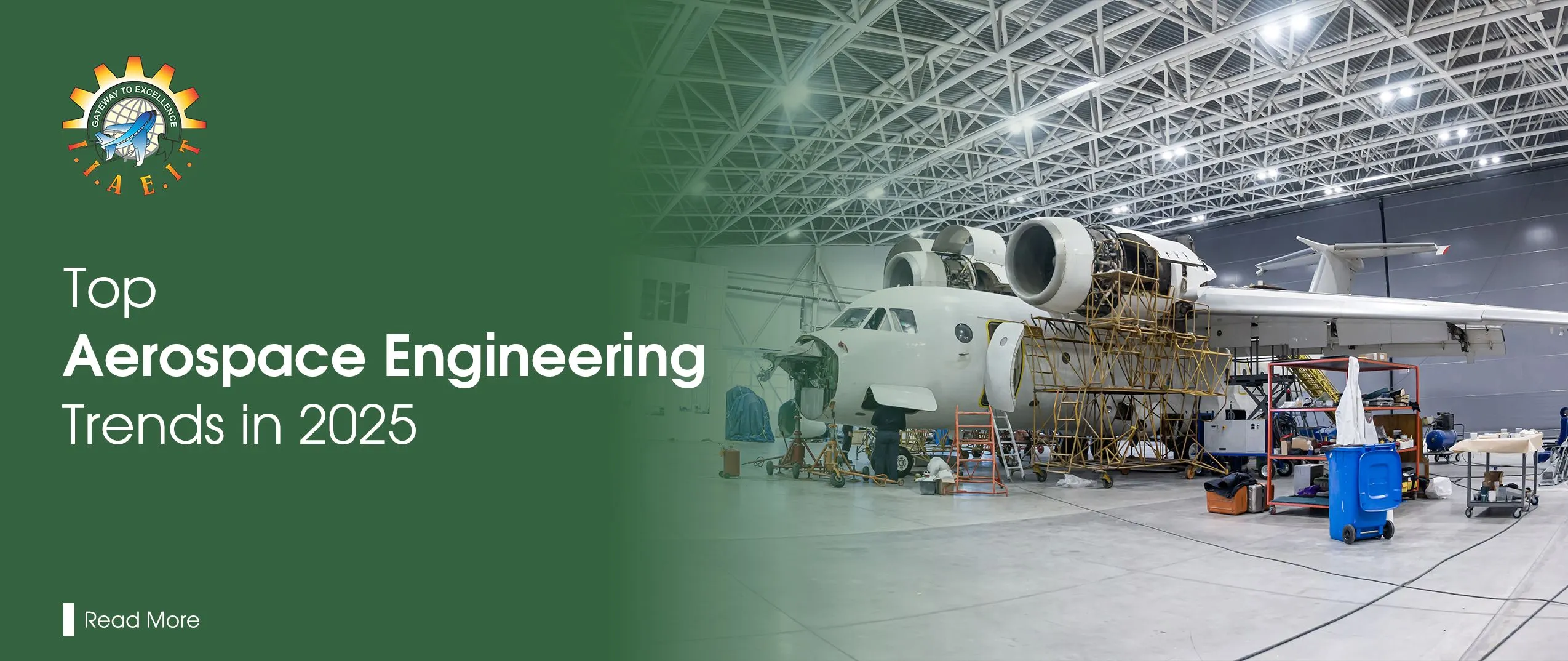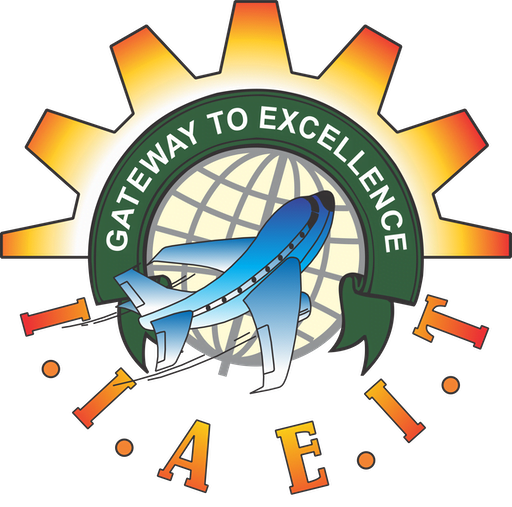Introduction
As with every other sector, the aerospace industry has also come very far in terms of advancement in technologies, sustainability efforts, and evolving markets. The aerospace industry is growing rapidly, resulting in high demand for skilled professionals. Especially in 2025, this industry will be characterized by increasing sustainability, automation and digitalization, focusing on cleaner fuels, advanced materials and AI-driven solutions. From hypersonic travel to artificial intelligence integration, the sector embraces innovations that promise to redefine air and space travel. This blog delves into the top aerospace engineering trends shaping the industry this year.
What is Aerospace Engineering?
Aerospace Engineering is a four-year degree program (B.Tech in Aerospace Engineering) that deals with designing, developing and testing aircraft and spacecraft it is a broad field that encompasses both aeronautical engineering which mainly focuses on aircraft and astronautical engineering which focuses on spacecraft, aerospace engineers, design and development of various components of aircraft and spacecraft, including structure, propulsion systems, control systems, and electronics. This program equips the students with advanced knowledge related to the field, with comprehensive theoretical and practical sessions.
Top Aerospace Engineering Trends in 2025
1. Hypersonic Flight and Advanced Propulsion Systems
Hypersonic technology, characterized by speeds exceeding Mach 5, is at the forefront of aerospace innovation. U.S. startups like Venus Aerospace have achieved significant milestones, such as the successful test flight of a rotating detonation engine, which offers greater fuel efficiency and speed. Their Stargazer M4 aircraft aims to reach speeds up to Mach 9, potentially reducing intercontinental travel times dramatically.
2. Artificial Intelligence and Automation
Adopting artificial intelligence in the aerospace industry automates manual processes and eliminates human errors. AI machine learning and computer vision, among other AI-related technologies, provide deep insight into the data by discovering new patterns and relations.
Additionally, AI-powered UAVs are utilized for tasks ranging from cargo delivery to surveillance, improving efficiency and reducing human error.
3. Sustainable Aviation Initiatives
Growing concerns about climate change among travellers force the aerospace sector to reduce its carbon footprint. Technological innovations aid it in achieving this goal and transitioning to sustainable operations. For example, biofuels reduce aerospace operations’ dependence on fossil fuels to cut carbon emissions.
Similarly, alternative energy sources like electric flight technology enable the industry to curb emissions further. Additionally, energy-efficient integrations and novel designs also aid in improving fuel efficiency, thereby reducing emissions and fuel costs
4. Additive Manufacturing (3D Printing)
Additive manufacturing enables the production of lightweight, complex components, improving fuel efficiency and reducing waste. The aerospace and defence sector’s additive manufacturing market is projected to grow significantly, driven by the demand for rapid prototyping and on-demand spare part production.
5. Structural Health Monitoring (SHM)
SHM systems use embedded sensors to monitor aircraft integrity continuously, detecting wear and potential issues in real time. This predictive maintenance approach enhances safety, reduces operational costs, and extends the lifespan of aircraft components. The SHM market is expected to grow substantially in the coming years.
6. Smart Intelligent Aircraft Structures
Advancements in materials science and sensor technology have led to the development of innovative aircraft structures capable of adapting to environmental conditions. These structures can self-diagnose and adjust for optimal performance, improving efficiency, reducing maintenance, and enhancing safety.
7. Quantum Computing in Flight Optimization
Quantum computing is being explored to optimize flight trajectories to reduce fuel consumption and emissions. Hybrid quantum-classical algorithms are being tested to solve complex optimisation problems more efficiently than traditional methods, although practical implementation requires further research.
8. Integration of Augmented and Virtual Reality (AR/VR)
AR and VR technologies are enhancing design collaboration and training in aerospace. Platforms like Campfire enable real-time, 3D design collaboration, allowing engineers to view and modify CAD files more efficiently. These technologies are also being adopted for immersive training simulations.
9. Growth of Unmanned Aerial Vehicles (UAVs)
UAVs are increasingly utilised in military and commercial applications, including surveillance, cargo delivery, and reconnaissance. Advancements in AI have enabled the development of autonomous UAV swarms and enhanced drone-based operations, contributing to the expansion of UAV capabilities.
Why choose aerospace engineering at IIAEIT Pune?
IIAEIT Pune is the Gateway to global opportunities for candidates who dream of flying high, not as pilots. But as aerospace engineers, they can pursue various courses related to space technology and build their careers in this rapidly expanding field. IIAEIT provides students with comprehensive theoretical knowledge and practical skills to become professionals in the space sector. Therefore, choosing IIAEIT Pune to pursue aerospace engineering can be the best option to boost yourself and take a step ahead for a bright future.
- Pioneering curriculum integrating Aeronautical and Astronautical Engineering.
- Tailored to meet the demands of the ever-growing aviation and space sectors.
- Hands-on learning with advanced facilities and practical projects.
- Exposure to both National and International Aerospace Organizations.
- Preparing students for a range of exciting career paths in Aerospace Engineering.
Conclusion
The aerospace industry 2025 will be a fast-evolving landscape driven by technological innovations and advancements. This year, Aerospace engineers may focus more on designing sustainable and environmentally friendly aircraft and space vehicles. This includes creating energy-efficient engines that will reduce carbon emissions and developing technologies to minimize the environmental impact of air and space travel. With the rapid growth of technological advancement, sustainability efforts and geopolitical considerations, the space sector will face immense growth. Advancement will further reshape air, travel, defence, separation, and space exploration, creating numerous job opportunities and challenges for various stakeholders.


